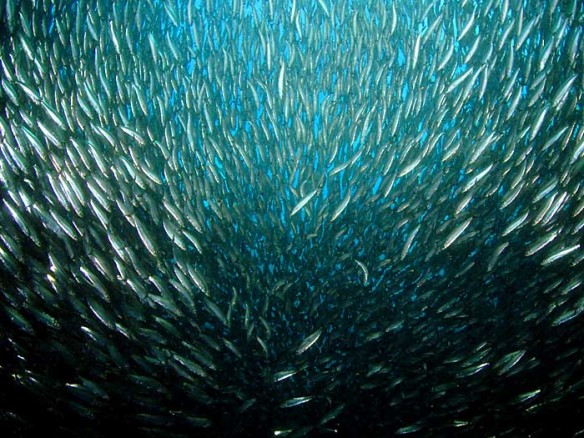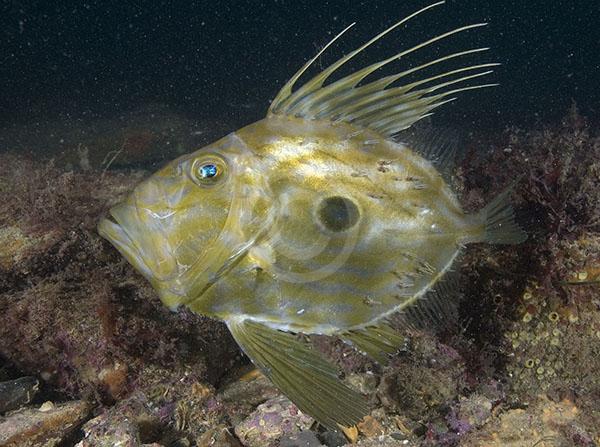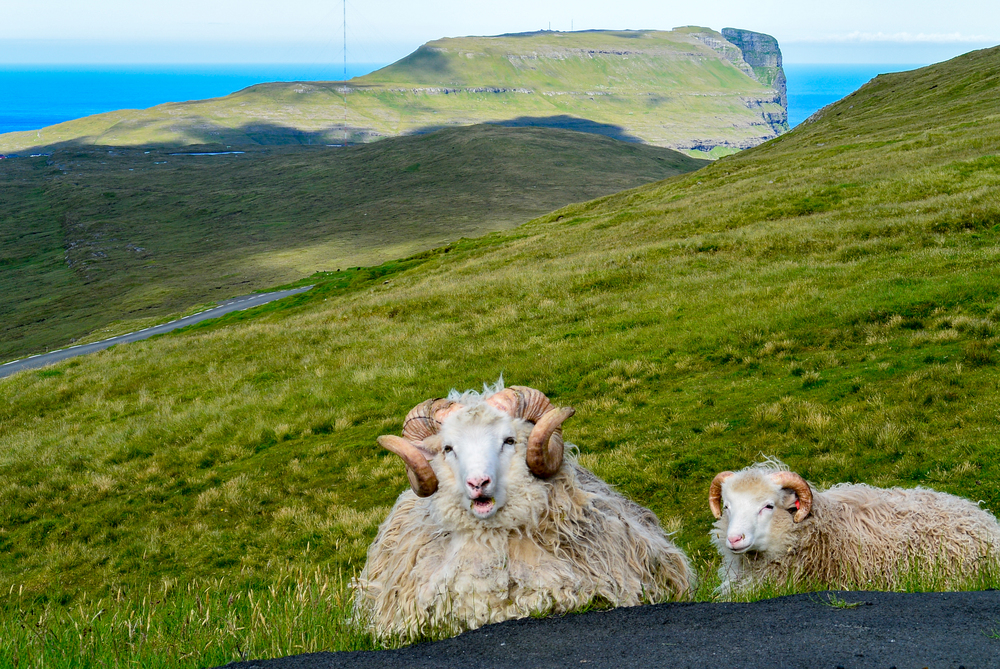Two eventful weeks have come and gone since F.O.G. has had a chance to put pen to paper. Our local halibut season kicked off on March 20, one day later than previously announced and was limited to 39 hours rather than the usual and expected 48. We are now into Halibut Opener #2. These changes were the result of inter-tribal jockeying. Makah and Quillayute started at noon on Saturday the 19th as advertised, the inside tribes kicked off Sunday at 7am and Quinault held back 'till Monday morning the 21'st. In this high-stakes poker game each tribe weighs their own perceived interests against those of the other tribes, set against ornate market, logistical and weather plays. Sadly for the inside tribes that we call friends and partners, the 2016 playbook favored coastal tribes against the inside fisheries. Sunday night/Monday weather kicked up to the point that the boats had trouble even retrieving their gear. So Makah had a clean shot with decent weather, while inside fishers lost about half the 39 hour period. Accordingly, catches were heavily weighted to the Coast.
Sucka! those are my fish!
Rumble on the Water
On the Inside we had a nasty price war that drove prices far higher than we expected--a new buyer has emerged targeting Lummi-caught fish. This high-end grocery oriented buyer has been a small player in the boutique salmon market for some years, but this was their first foray into the tribal purchasing world. Fish business is riddled with chuckholes and inside knowledge, and tribal fish business is all the more so. In order to operate smoothly in the tribal world, as with any subculture, including the Seattle Restaurant World, it helps to know where the bodies are buried, so to speak. We have always worked with tribal fish buyers for just this reason. This new buyer did exactly the opposite of this--They fielded two buying boats and appealed directly to the fishermen through Facebook with an offer of $.50 above market. Predictably, the price exploded and the new buyer cracked. Long-established buyers at Lummi found their fishermen bolting and retaliated by calling in boat and bait loans and cutting guys off on bycatch markets, the new outfit ended up hugely short of the volume which they had contracted for, and everybody on the buy side took a terrible beating on margin.
Moving Forward
We have been some days trying to sort out the wreckage, and a degree of calm has returned to the sandbox. Most, but not all of the principle parties are again speaking with each other. And while this was perhaps a classic market price storm, the biggest news is the dog that did not bark--these past years Ocean Beauty has been the largest buyer of inside fish, through the big-dog shore plant at Lummi and your devoted friends at JFF have been number 2. This has been an irritant for us, in that we have worked very hard to create a special place in the market for these superlative fish, and then every year OB would backwash 4-60,000# of inside Halibut onto the general market. Ocean Beauty has now stepped aside for the new operation--they have a distribution agreement and so chose not to compete with one another--and between the Newbies and us, 80+% of these fishes are now being purchased, handled and marketed as something unique and wonderful.
So, the higher-than expected halibut pricing you saw last week, while uncomfortable, is merely the birthing pangs of a new, glorious order of halibut supply lines for inside product. Spreading the pain, we all live to fight another day. And as reported in a previous Fish-O-Gram, strong demand for Skate helped balm bidding-war induced financial wounds. For the weeks ahead halibut pricing will return to more or less normal--oscillating between the mid-10s and mid-12s.
We were deluged with beautiful, well-sized, lovingly handled but overpriced inside halibut. Our S'Klallam friends did particularly well and we have been enjoying those fish thanks to Super Buyer Jamie Torpey.Opening number 2 fired off Friday the 1'st and closed 2pm Saturday. Fresh Local Halibut Once Again, at much more reasonable pricing!!!! The second opener went off smoothly, with Lummi enjoying greater catches, while the Southern Tribes were blown off the water for the second half of the opener. We have ample supplies of all sizes of halibut for you! One more opener is expected for the first week in May. More facts and analysis about the halibut fishery next F.O.G!
Local Boats, Local Fishes
They That go Down To The Sea in Ships; Or, Why F.O.G. Loves the Seafood Business
Last opener, late Monday evening, the 21st, your F.O.G correspondent was cruising North to Lummi and received a frantic phone call from the Cornet Bay wing of the Jones/Puget Sound Seafoods buying venture. Seems the crew at Cornet, while driving their 28' box truck and brand new pickup truck, had been pulled over and and not one of the three-man crew had a drivers license. They did not get arrested, or even ticketed, but they, and the truck loaded with halibut, were stranded in Anacortes. The traffic stop stemmed from a running feud between fish buyers and Washington State Parks' Ranger Rick over the legalities of fish buying at the State Park boat launch at Cornet Bay--a full story in itself. This got us thinking about our calling.
The appeal of the fish business is multi-fold. First is the sheer sensual delight of the fish themselves. They are, almost uniformly, perfect. In their native habitat they move with infinite grace--one of our favorite family activities is to go watch the fishes swing through the observation windows at the Ballard Locks. Fishing is always a prayerful activity, you never know what will come up, fishing of any sort is an unfailing flirtation with destiny. Hooked, netting or trapped, they fight nobly but finally, generously, yield themselves. Once caught, the exterior of almost all fish varieties glisten with lovely colors and protective slime. They smell of a different world, and each has it's own distinct aroma--Halibut smell like mushroom-rotted forest duff. Chum salmon smell like cucumbers. Sockeye smell like all the promise and heartache of endless summer.
Fishes are entirely alien, but endlessly attractive to us land-bound fumblers. Biologically fish are a wonder, Salmon and many other fishes have lateral lines which function as sensory organs--flatfish have eyes on the same sides of their heads. Schooling fish like Mackerel and Sardine have the ability to literally bend light to confuse predators. The males of Ragfish and some other cartilaginous deepwater fishes do not eat after puberty--they lose their mouth and digestive systems and live for months or years on the accumulated reserves of their liver alone. Octopi learn faster than human children and can grow 2% per day, given ample food.
We can't do that.
To cut a fish is to examine the miracle of the universe embodied--that life endures, replicates and varies endlessly--all the while coming to the same point of delirious abundance . All digestive and vital organs can be removed without any meat contact. Each gut-sack is a further revelation--open a chum salmon and see a wash of small jellyfish flood out. Open a Coho salmon and see partially digested candlefish and herring. Open a sockeye and remove a fine paste of concentrated phytoplankton. Our inside halibut are stuffed with Spot Prawns and soft Dungeness Crab. Crack open bellies of our Eastern fishes for a glimpse of prey from a far-distant continental shelf--squid or butterfish--soft baby lobster.
Once filleted fish become translucent, pearlized with first contact to air. The flesh may be eaten raw or prepared further. Here again, the sensuality of fish flesh is overwhelming--to grill the first sockeye of the season, cooked bone-in with raspberries and rock salt, or to ceviche the Rhode Island Black Sea Bass with salt and lime, or steam Pink Scallops in their own liquor, to sit on a dock in October and crack a perfect, gravid, spine-waving urchin in the weak fall twilight, to crack and slurp a perfect, plump oyster, or to puree crab butter into a luscious crab soup--fish cookery and eating ranks among the greatest of life's physical pleasures. Oysters in the fall, scallops in winter, bottomfish in the spring and salmon in the summer, fishes are an unending, movable feast. A harvest furlough of any species only whets the appetite for delights ahead.
Plus it's brainfood.
Seafoods connect the generations as nothing else. The halibut we bring you are the exact fishes pursued by Washingtonians for millennia, the sockeye caught off Lopez are exactly the same as the ones pursued by hundreds of generations that have gone before us. Our shellfish beach is blessed with a huge shellfish midden and as we work, we grind underfoot shells remnant from thousand-year-old clam bakes. A life spent following the sea creates an independence and watchfulness not matched in any other profession. Food that is still subject to the vagaries of wind and tide is a powerful tonic--wild fishes will not be streamlined! To catch, hustle or purchase wild fish is to embrace the unknowable chaos--to accept the limits of human agency. Salt water mirrors the blood that runs through our veins and the saliva the wets our mouths--we are drawn to the great pulsing placenta of the planet from which we sprung, and drawn to the creatures we left behind those epochs ago. June Burn writes, "Does our heart remember sorrow as our blood remembers the sea?"
JFF Remembers the Swamp.And in our dis-functional, excessively packaged, over-regulated, ram-rodded world, the wild fish business is the last untame-able, outlaw sector of the food world. Puget Sound tribal fisheries are the wildest and wooliest corner of a rasty industry. In this day and time you can (and F.O.G. almost has) be sent to jail for making a prosciutto or milking a cow. Spraying mud on the road from tractor tires is a federal offense and children under 16 are no longer allowed to work in their parent's businesses. And yet, all around us, as F.O.G. writes, men, women and children are casting prayerful hooks into our glorious, rock-bound and current charged waterways just as their ancestors did before. They are out fishing in 60' million dollar purse seine boats, flat-bowed river skiffs, half sunken relics from the age of wood and muscle. And a lucky and skillful fisher might catch a years' income worth of fish on one haul. Or enough skate to light up Seoul. And a scrappy, semi-solvent family farm can endrun the biggest muscle in the industry for a week here and a week there, once in a while. And a legitimate, bonded fish buyer sends out a commercial truck with $100,000 worth of product, a brand-new pickup truck, a scale, three men and no drivers licenses.
Neither of us in the founding generation here at Jones Ranch were born to the business. This is a life we chose and came to as immigrants. Early days on the water, here and in Alaska are etched on the memory like first love, the wild rush of freedom as the boat leaves harbor, the smells of the land as they roll across the water at twilight--the smells of rainforest rolling over Luck Pt, musky tundra at Egegik, sweet cottonwoods off Sinclair Island, the heft and authority of our first big catch on our own boat--the delirious joy of harvesting our own first oysters. And so we will always retain a joy of discovery that salts and sharpens the day-to-day pleasures of our calling. Our days will continue to change and evolve, our role within the tapestry will continue to develop, and the moments of triumph, diamond clarity and purpose will continue to propel us forward.
We're first generation.
So, F.O.G. drove the halibut home while the license-less three scuttled home via backroads bolt-holes. Since then F.O.G. has been glowing with the reflected glory of this beautiful thing that we call the seafood business. There's no business like fish business, there's no business I know.....-- THEY THAT GO DOWN TO THE SEA IN SHIPS, that do business in great waters; These see the works of the LORD, and his wonders in the deep. For he commandeth, and raiseth the stormy wind, which lifteth up the waves thereof.Market Update/Fisheries Update, Chef's call to action.Along with Halibut we welcome back Blackcod from Alaska and Neah Bay. Pricing is more or less as it's been. The Oregon Salmon Troll season opens April 8. Expect very limited supplies and high prices. The Puget Sound Crab season closed March 27th after a bangup year--almost 11 million pounds caught between the State and Tribes. Fishermen report phenomenal numbers of soft crab newly molted into harvest-legal size. We will begin to see tribal pop-openers here shortly, and so should be able to maintain a fairly steady flow of live, local crab. The Oregon, Washington and California Coasts continue to bang away, with reports of decent fishing.Razor Sharp
In further F.O.G. news, we expect to begin selling live Razor Clams from Quinault this next week. Call for pricing and availability.
Razor Clam, Jackknife.
Eastern Fishes
As our fisheries are loosening up, so too are Eastern Fishes. Don't neglect to look East! Pricing is falling and availability is excellent on Monkfish, John Dory, Black Sea Bass and T&T with the occasional Conger Eel or flatfish thrown in for sauce.
Just as Special as in January, only cheaper now.Pink Power Play.
In the ongoing saga of our attempts to bring Pink Scallops back to you, we have some fairly big news, and a request for help. As dedicated F.O.G. readers already know, we managed to get the Pink Scallop fishery re-opened after almost 20 years. Doing so took 6 years of tireless lobbying by us and Joe Stephens. Since the fishery was last open federal standards for harvest of shellfish have tightened dramatically. Yesterday F.O.G spoke with Jim Ranson, original pioneer of the scallop fishery 35 some years ago. Jim recollected that when he began the scallop harvest, he made one phone call to the Department of Health's Frank Cox, now retired, to ask about D.O.H. requirements for kicking off the scallop harvest. "Regular Testing" said Frank, "And I hope you make money" 35 years on, the bureaucratic thicket is almost impenetrable. Briefly, we may only harvest scallops in areas currently certified for shellfish. Once D.O.H. certifies an area, Fish and Wildlife must also open it. D.O.H. gave us an area on the north side of Orcas that happens to have very few scallops--the pinks are highly cyclical, with a very short life-cycle, and tend to boom and bust in any given area. The basin-wide populations are extremely healthy, in the 100,000,000#+ range. Just not in the area that we are allowed to harvest. D.O.H. is refusing to move with any speed to classify and certify new areas. Fish and Feathers is refusing to open currently certified areas around Lopez and Shaw that do have larger stocks. To date we have harvested only a few hundred pounds at a substantial financial loss to our divers and ourselves, given given how challenging harvest has been in the Northern district. Worse yet, our agency counterparts are using the poor landings thus far to claim that the pink scallop fishery is "non-viable", not biologically, but in harvest and market terms, to justify not moving, or moving slowly on certifying/opening more areas. We are desperately working to keep even small numbers of scallops moving to keep the fishery alive. We need your help! The state needs to hear that the scallop fishery is justified from a demand perspective, and they need to hear it from someone other than us.We know the only thing wrong with this fishery is Washington State Bureaucracy. We know that you love the scallops. We know your customers love the scallops. We are panting for the day that we can fulfill demand on these wonderful creatures. We are applying all the pressure we can. Now, F.O.G needs your help. As some of the highest-profile chefs/restauranteurs in the state, you-all have a unique bully pulpit--you are the rockstars of the foodshed!! Please take a moment to review the attached draft letter, amend it as you wish and send it to the relevant big bosses. Please ask any friendly journalists to write up the struggle. Don't let a good thing die!!! THINK PINK!!!!!! Don't let the Bureaucrats Win!!!!JFF Meats!!
While F.O.G. sings the praises of fish and fisheries near and far, back at Jones Ranch lurk some of the finest meats produced anywhere. Not only is meat a fine punctuation to a seafood-based diet, many meats have fish-friendly applications. Meat provides heft and balance to many seafood dishes. No turf, no surf. We are currently slaughtering Fine Island Lamb, Pork and Beef. We continue to connect with our fellow small farms to expand our meat selections.
It's important to keep the grass down.
Ring Of Fire, Inherit the Smolt.
Ash Now, Sockeye Later.
What we Hear
On March 27 Mt Pavof on the Alaska Peninsula began a fairly major eruption. Mainstream media focused on disruptions to airplane flight patterns and the risks to automobile paint for nearby residents. F.O.G. likes to dig a little deeper.
The Deeper Story
As we all know, the Alaska Peninsula, extending up to Bristol Bay, has the largest, most robust Sockeye Salmon runs in the world. Sockeye spend somewhere around a year as smolt in up-river lakes--meaning they can only thrive in certain river systems. South-Central Alaska is a geographical and hydrological paradise for sockeye, with just about every river of note having a significant lake upstream. Sockeye are plankton eaters, meaning they rely on primary biological productivity whether in fresh or salt water. A volcanic eruption slathering salmon-spawning streams and smolt-laden lakes sounds like a disaster, and the ash can surely smother fish in the moment, but as it turns out, volcanic ash also carries great concentrations of mineral fertilizers. The greatest example of this is the explosion of biological productivity, and ultimately, sockeye returns in Lake Becharof, following a massive eruption of the Ukinrek Maars, a pair of volcanic vents a mile South of Lake Becharof in 1977. Post-eruption, Lake Becharof was a mess, murky and mucky with caustic volcanic ash. Disaster was predicted for incoming salmon and the smolt then swimming in the lake. Instead, lake Becharof smolt survival and growth rates exploded, and a few years later adult returns did too. Egegik sockeye returns averaged 2,320,000 fish annually for the 20 years prior to the eruption and 9,100,000 annually for the twenty years following, or almost a 400% increase. Smolt survival per spawning female also exploded, and successful returns of adult fish from outgoing smolt also hit the highest levels ever recorded, anywhere. In 1987 almost 26 million adult fish returned to the Egegik river, with some age classes enjoying marine survival rates of over 50%--unprecedented in modern fisheries observation. To put those numbers in perspective, the Egegik River is roughly 28 miles long and has roughly equivalent flow rates to the Nooksack River back home in Whatcom County. Record sockeye production on the Fraser river was 34 million fish, in 1913. The Fraser is roughly 850 miles long, not counting tributaries, drains 85,000 square miles, and has a flow rate of 125,000 cubic feet/second, about 25 times the flow rate of the Egegik River. Even today, 39 years after the eruption, Egegik salmon production is still orders of magnitude higher than historic, pre-eruption levels. This history has been repeated with just about all the volcanoes in South-Western Alaska over the years. So while F.O.G. feels deeply for those whose flights were re-routed, we are extremely excited to watch Alaska Peninsula Sockeye runs flourish in the years ahead!You're worried about the paint job???Check out this spectacular photo album of the recent eruption;
http://www.ktuu.com/news/news/pavlof-eruption-alaska-village-covered-in-ash-20-flights-cancelled/38732402
We are, your dock-rumbling, fully licensed, founding family, rabble-rousing, pink persisting, ash spewing, news combing, JFF Crew.













No comments:
Post a Comment